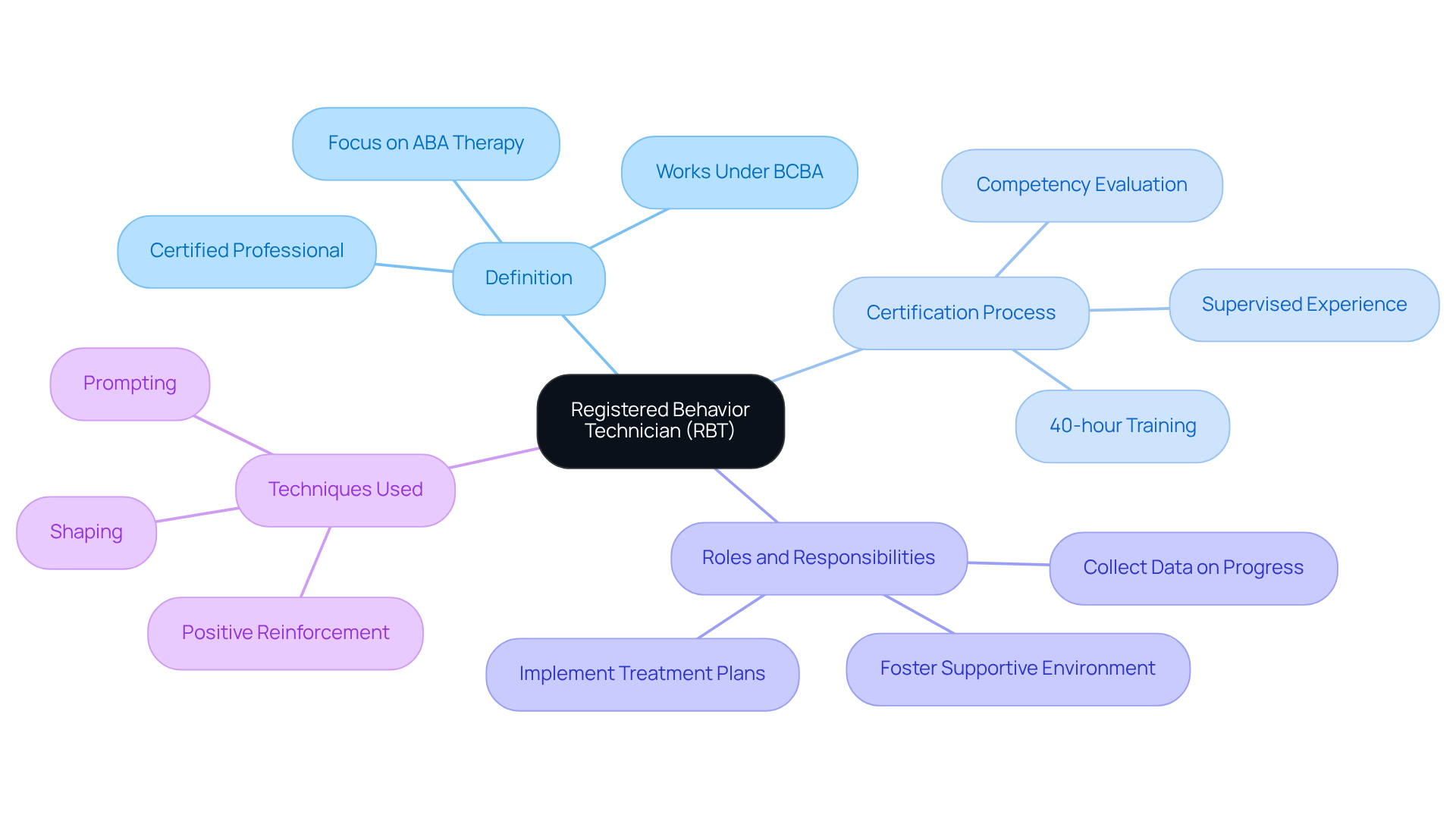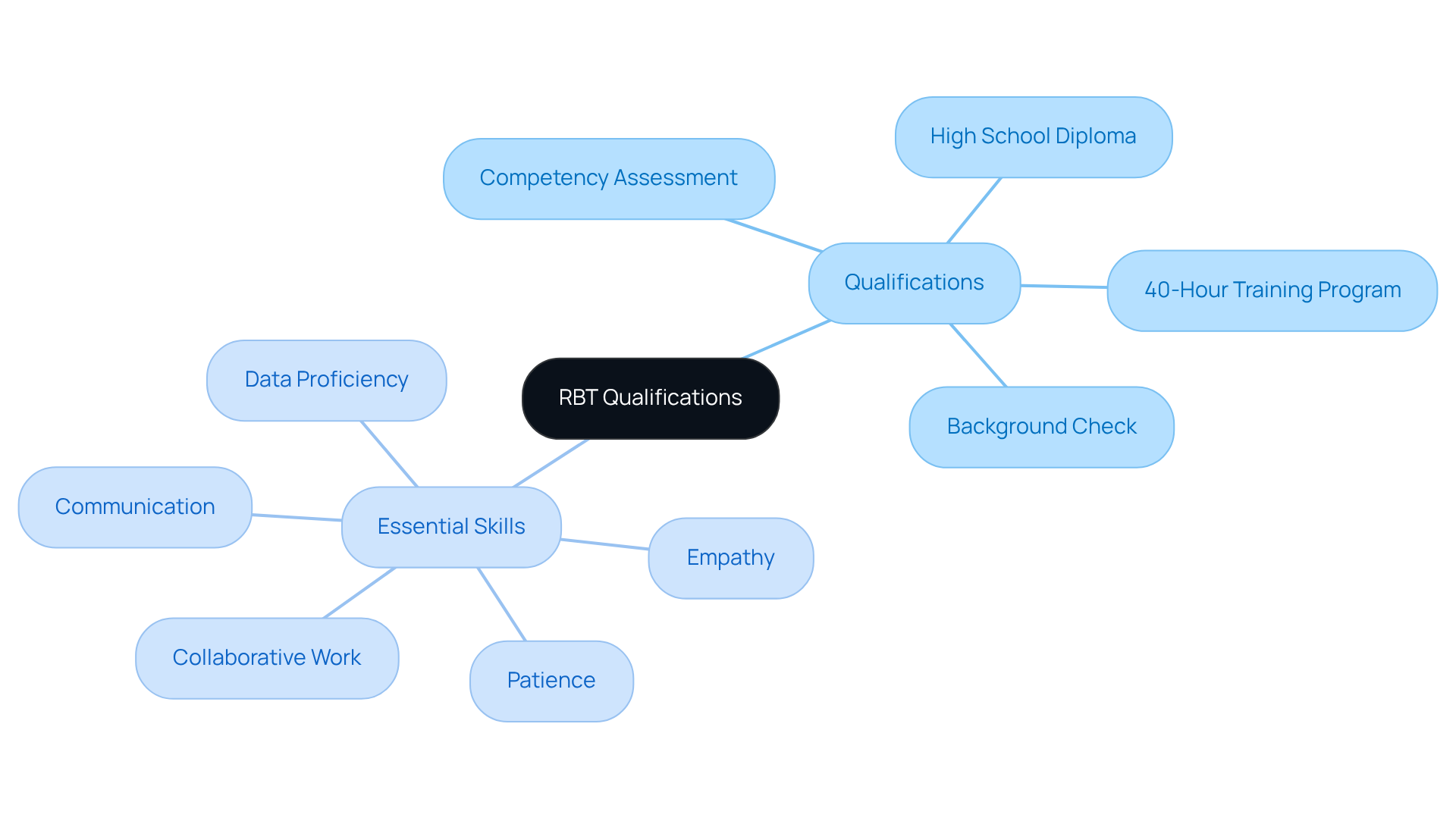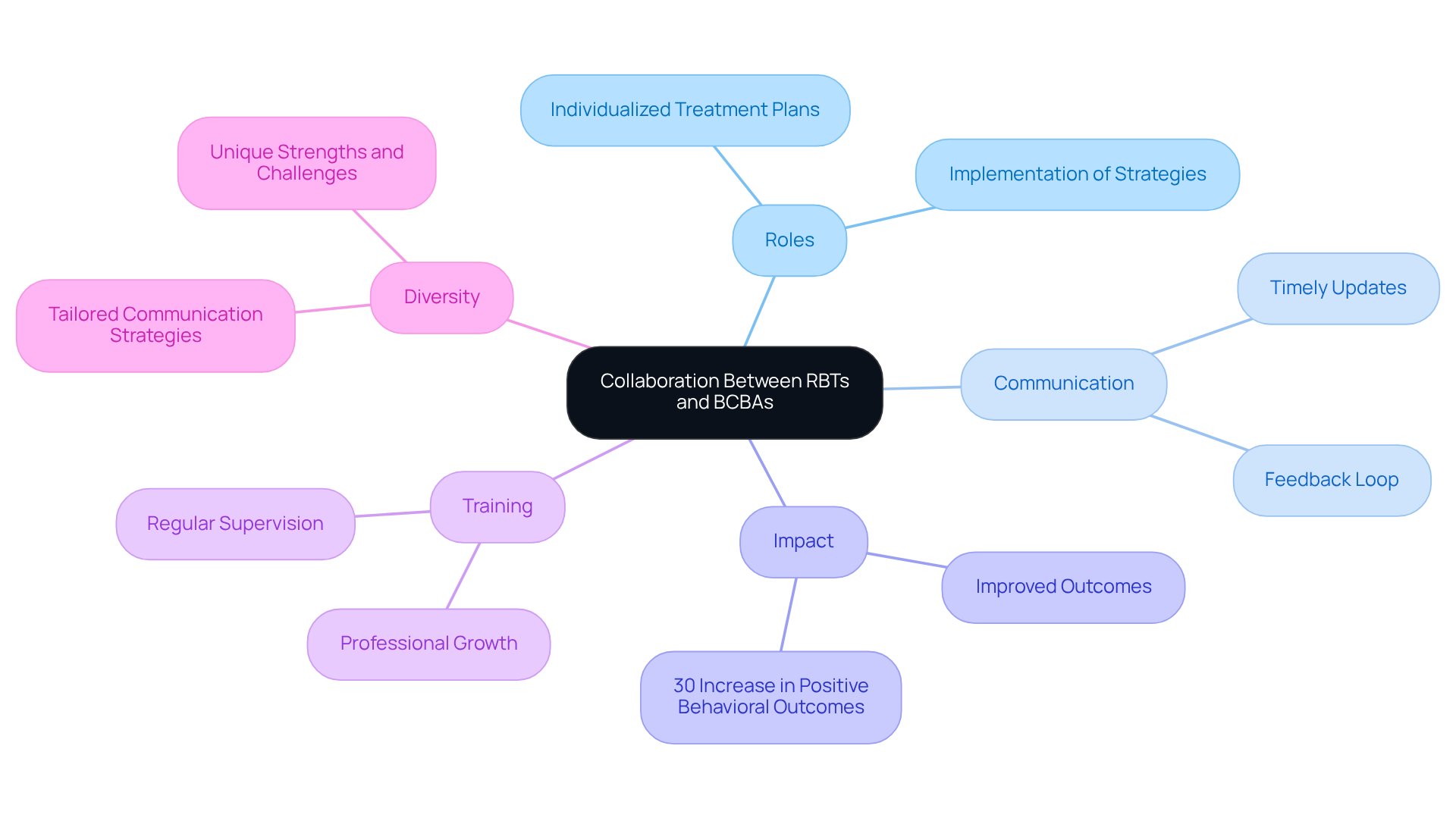September 29, 2025

RBT, or Registered Behavior Technician, represents a certified paraprofessional who implements behavior-analytic services under the guidance of a Board Certified Behavior Analyst (BCBA).
The critical role of RBTs in Applied Behavior Analysis (ABA) therapy cannot be overstated. They:
These actions are essential for improving outcomes for individuals, particularly those with autism spectrum disorder.
As the demand for BCBAs continues to rise, understanding the value of RBTs is crucial for effective recruitment and service delivery.
As the demand for effective behavioral therapy continues to rise, the role of Registered Behavior Technicians (RBTs) has become increasingly vital in the landscape of Applied Behavior Analysis (ABA). RBTs serve as the frontline professionals who implement tailored interventions, directly impacting the lives of individuals, particularly those with autism spectrum disorder.
But what does it truly mean to be an RBT? How does this role fit into the broader framework of ABA therapy? Understanding the significance of RBTs not only clarifies their responsibilities but also highlights the essential collaboration required with Board Certified Behavior Analysts (BCBAs) to achieve optimal therapeutic outcomes.
A compelling statistic: as of 2025, there are over 100,000 (RBTs), as RBT stands for, certified by the (BACB). This number reflects the growing demand for these professionals in the field of Applied Behavioral Analysis (ABA). A is a certified paraprofessional who operates under the supervision of a Board Certified Analyst (BCBA) or a Board Certified Assistant Analyst (BCaBA). Their primary responsibility is to implement and interventions as outlined by their supervising BCBA.
RBT stands for Registered Behavior Technicians, who are specifically trained to work directly with individuals, applying the principles of ABA to address behavioral challenges, particularly in those with autism spectrum disorder (ASD). To earn the , which stands for Registered Behavior Technician, candidates must complete an extensive 40-hour training program, pass a competency evaluation, and undergo under the direction of a BCBA. This rigorous preparation ensures that RBTs are equipped to assist individuals effectively.
Registered Behavior Technicians play a vital role in improving outcomes for individuals by implementing , gathering data on progress, and fostering a supportive environment that encourages skill development and behavioral enhancement. Techniques such as positive reinforcement and prompting are commonly employed by behavior technicians to help reduce challenging behaviors and promote skill acquisition.
Are you facing challenges in hiring qualified behavior technicians? Consider how utilizing a reliable platform like Hire ABA can and connect you with the right professionals to meet your needs.

are pivotal in the execution of ABA therapy, directly collaborating with individuals to implement effective . Their responsibilities encompass:
Have you considered the ? Through , RBTs employ that not only encourage positive behaviors but also diminish maladaptive ones. This consistent and effective delivery of interventions is crucial for achieving desired therapeutic outcomes.
In an ever-growing demand for qualified professionals in the field, is essential for any healthcare employer looking to enhance their team. Explore how can streamline your recruitment process and ensure you have the right talent to meet these challenges head-on.
To become a Registered Technician, which is what RBT stands for, candidates must meet , including:
Essential skills for registered behavior technicians include:
These skills are vital for tracking client progress and informing necessary treatment adjustments. is encouraged to maintain the , as RBT stands for Registered Behavior Technician, ensuring practitioners remain informed about best practices in the field.
Notably, the average pass rate for RBT training programs hovers around 80.4%, with the University of Kansas achieving the highest pass rate at approximately 95%. Additionally, registered behavior technicians must undergo a .
Pursuing in ABA therapy can enhance their qualifications and career prospects. The in the United States is around $57,000 annually, reflecting the financial viability of this career path.

Collaboration between , where RBT stands for Registered Behavior Technician, and is essential for the success of . BCBAs design and oversee , while Registered Behavior Technicians implement these strategies in real-world settings. Effective communication is paramount; Registered Behavior Technicians must provide and any challenges faced during sessions. This feedback loop enables BCBAs to make to treatment strategies, ensuring individuals receive consistent and high-quality care.
The impact of this partnership is significant, as research shows that leads to improved outcomes for individuals. For instance, studies indicate that individuals exposed to motivational statements in therapy experience a 30% increase in positive behavioral outcomes. Regular supervision and training sessions not only strengthen this partnership but also foster . By creating an , RBTs, which is short for Registered Behavior Technicians, and BCBAs can collaborate effectively to optimize therapeutic interventions, ultimately benefiting the clients they serve. Moreover, acknowledging the diversity within the Autism spectrum is vital; each individual has that necessitate tailored communication strategies.

Registered Behavior Technicians (RBTs) are indispensable in the realm of Applied Behavior Analysis (ABA), acting as the frontline professionals who implement therapeutic strategies aimed at enhancing individual behaviors and skills. The critical nature of their contributions underscores the importance of RBTs in bridging the gap between theory and practice within behavioral therapy.
The responsibilities of RBTs are multifaceted, encompassing the execution of treatment plans, data collection, and providing feedback to Board Certified Behavior Analysts (BCBAs). To become an RBT, individuals must complete a rigorous training program and possess essential skills such as communication and empathy. This highlights the professionalism and dedication inherent in this role. Furthermore, the collaboration between RBTs and BCBAs is vital for ensuring that interventions are effective and tailored to meet the unique needs of each individual.
Recognizing the importance of RBTs in ABA therapy should prompt healthcare employers to invest in qualified professionals capable of significantly impacting the lives of those facing behavioral challenges. As the demand for trained behavior technicians continues to rise, prioritizing the recruitment and training of RBTs not only enhances therapy outcomes but also contributes to the overall advancement of the field. Embracing this knowledge can lead to improved practices and better support for individuals on their journey toward behavioral improvement.
How can Hire ABA assist you in addressing your hiring challenges? Take action now to ensure your team includes skilled RBTs, paving the way for success in behavioral therapy.
What is a Registered Behavior Technician (RBT)?
A Registered Behavior Technician (RBT) is a certified paraprofessional who implements behavior-analytic services and interventions under the supervision of a Board Certified Behavior Analyst (BCBA) or a Board Certified Assistant Behavior Analyst (BCaBA).
What qualifications are required to become an RBT?
To become an RBT, candidates must complete a 40-hour training program, pass a competency evaluation, and undergo supervised practical experience under the direction of a BCBA.
What is the primary role of an RBT?
The primary role of an RBT is to work directly with individuals, particularly those with autism spectrum disorder (ASD), applying the principles of Applied Behavioral Analysis (ABA) to address behavioral challenges and implement personalized treatment plans.
How many RBTs are projected to be certified by 2025?
As of 2025, it is projected that there will be over 100,000 Registered Behavior Technicians certified by the Behavior Analyst Certification Board (BACB).
What techniques do RBTs commonly use?
RBTs commonly use techniques such as positive reinforcement and prompting to help reduce challenging behaviors and promote skill acquisition among individuals they work with.
How do RBTs contribute to individual outcomes?
RBTs contribute to improving outcomes for individuals by implementing treatment plans, gathering data on progress, and fostering a supportive environment that encourages skill development and behavioral enhancement.
What challenges might organizations face in hiring RBTs?
Organizations may face challenges in hiring qualified behavior technicians, which can be addressed by utilizing reliable recruitment platforms like Hire ABA to connect with the right professionals.
Our expert recruitment strategies and AI-driven sourcing ensure that you receive top-notch candidates quickly, without compromising on quality. Whether you’re looking for BCBAs, Clinical Directors, or RBTs, we’ve got you covered.